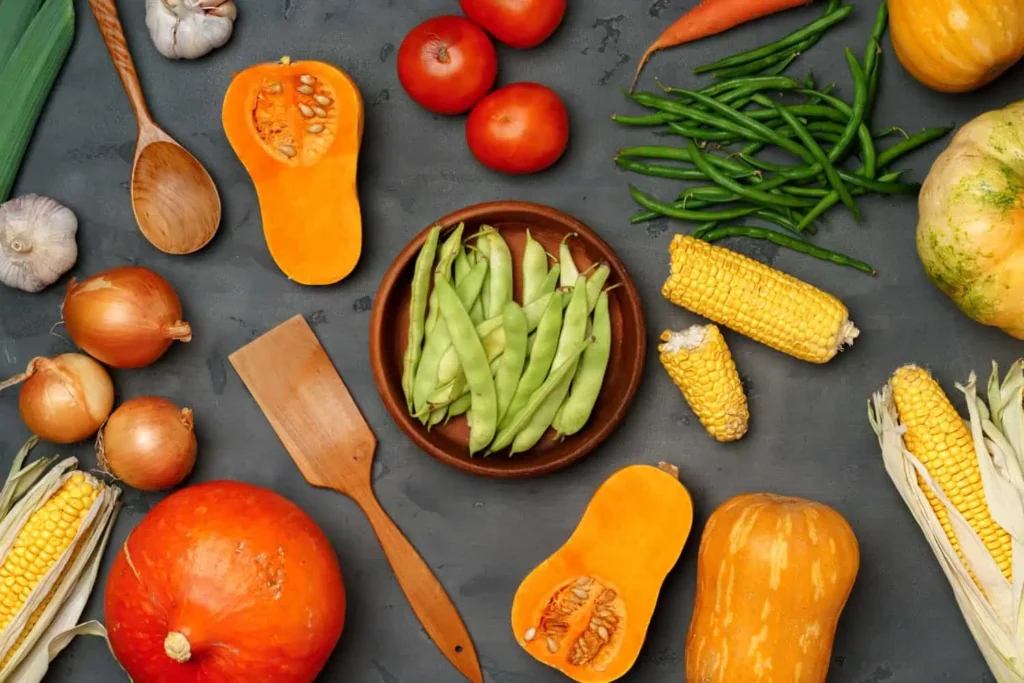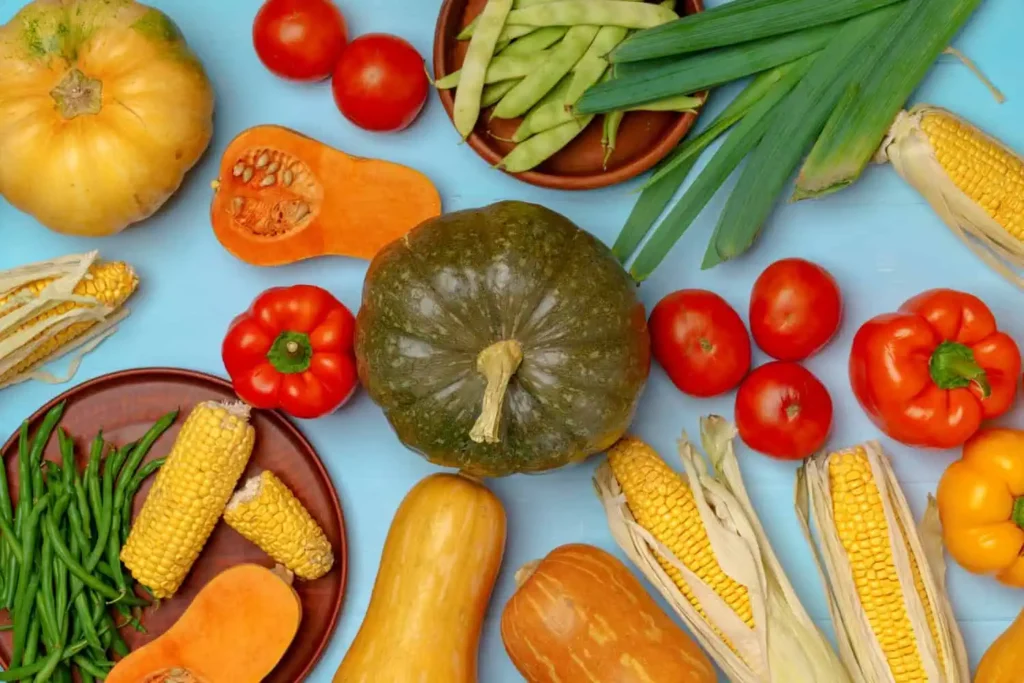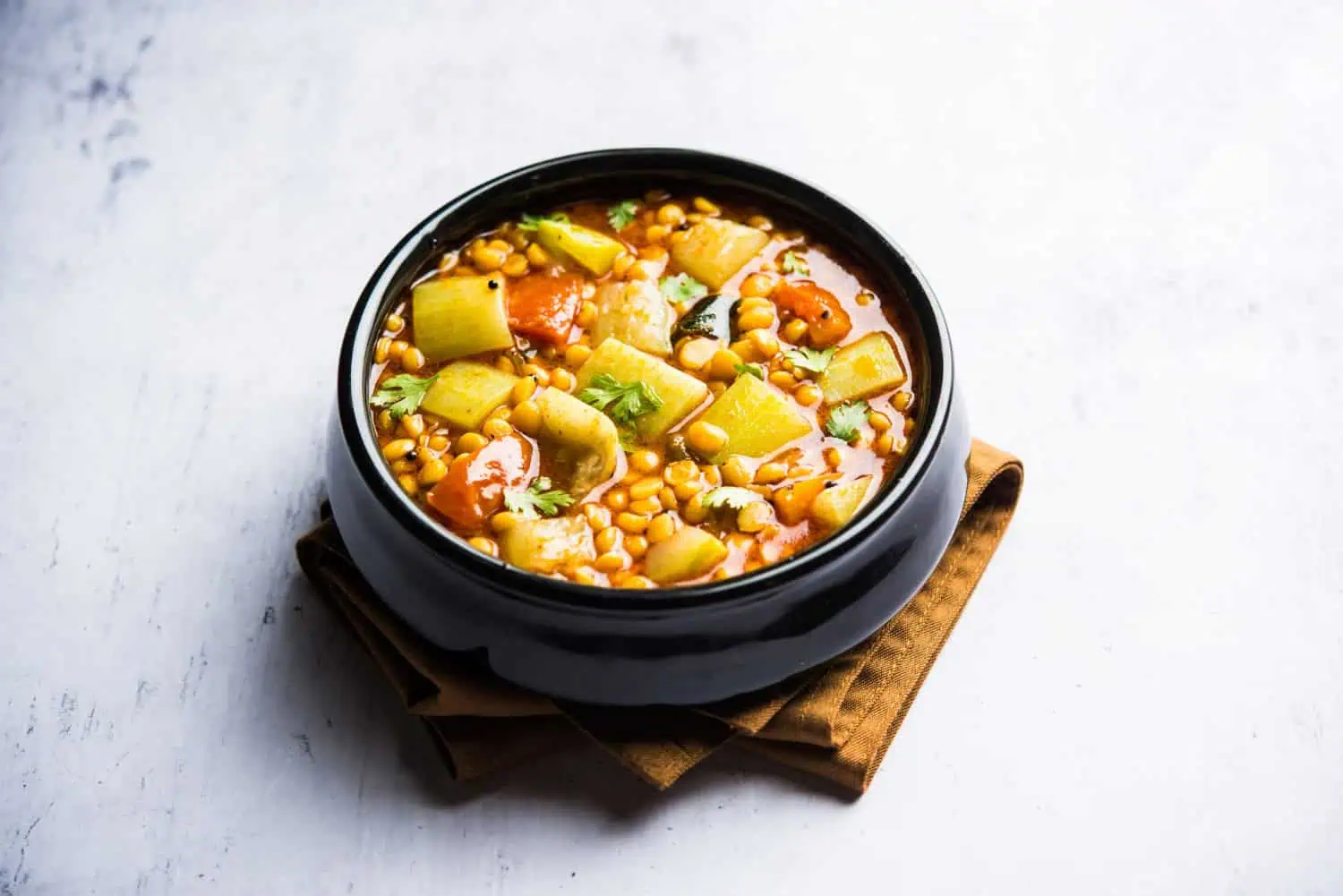The traditional Three Sisters soup is a hearty and nutritious Native American dish made primarily from the three main agricultural crops known as the “Three Sisters”: corn, beans, and squash. These ingredients have been cultivated together by Indigenous peoples for centuries, representing not just sustenance but also cultural significance and agricultural wisdom. This soup is more than just a recipe; it’s a symbol of sustainability, community, and the interconnectedness of nature.
In this comprehensive guide, we’ll explore everything you need to know about Three Sisters soup, including its history, ingredients, preparation methods, nutritional benefits, modern variations, and much more. Whether you’re a food enthusiast, a history buff, or someone looking for a healthy and delicious recipe, this article will answer all your questions about what Three Sisters soup is made of and why it’s so special.
The Historical Significance of Three Sisters Soup
The name “Three Sisters” comes from the Native American tradition of growing these three crops together, as they benefit each other in the garden. This agricultural technique, known as companion planting, was developed by Indigenous peoples long before European contact. The Three Sisters soup recipe has been passed down through generations, maintaining its cultural importance while adapting to modern cooking methods.
The Sacred Connection of the Three Sisters
The “Three Sisters” are more than just crops—they are a symbol of harmony and interdependence. Each plant plays a vital role in supporting the others, both in the garden and in the soup pot:
- Corn (Sister One): Provides a natural pole for beans to climb, ensuring they grow tall and strong.
- Beans (Sister Two): Add nitrogen to the soil, enriching it for the corn and squash.
- Squash (Sister Three): Spreads along the ground, creating a natural mulch that retains moisture and prevents weeds.
This method of planting not only maximizes agricultural yield but also reflects the Indigenous philosophy of living in balance with nature. The Three Sisters soup embodies this philosophy, combining these three crops into a dish that is as nourishing as it is symbolic.
The Origins of Three Sisters Soup
The origins of Three Sisters soup can be traced back to the Haudenosaunee (Iroquois) Confederacy, which includes the Mohawk, Oneida, Onondaga, Cayuga, Seneca, and Tuscarora nations. These Indigenous peoples of the northeastern United States and southeastern Canada were among the first to cultivate the Three Sisters together. The practice spread to other Native American tribes, including the Cherokee, Hopi, and Zuni, who adapted the planting method to their local climates and traditions.
The soup itself was a way to combine the harvest into a single, nourishing meal. It was often prepared during communal gatherings, ceremonies, and celebrations, making it a dish that brought people together.
Essential Ingredients for Traditional Three Sisters Soup
The beauty of Three Sisters soup lies in its simplicity. The core ingredients—corn, beans, and squash—are staples that have been used for centuries. However, the recipe can be adapted to include additional ingredients based on personal preference or regional availability.
The Primary Components
- Corn (Maize):
- Fresh, frozen, or dried corn kernels can be used.
- Traditionally, white or yellow corn varieties are preferred.
- Corn provides natural sweetness and a slightly crunchy texture to the soup.
- Beans:
- Green beans or dried beans (such as kidney, pinto, or navy beans) are commonly used.
- Beans are high in protein and fiber, making the soup hearty and filling.
- They add a creamy texture when cooked.
- Squash:
- Winter squash varieties like butternut, acorn, or pumpkin are traditional choices.
- Squash adds natural thickness and sweetness to the soup.
- It’s rich in vitamins, minerals, and antioxidants.
Additional Traditional Ingredients
While the Three Sisters are the stars of the dish, other ingredients are often added to enhance flavor and texture:
- Onions: Wild onions were traditionally used, but modern recipes often use yellow or white onions.
- Herbs and Seasonings: Sage, thyme, and bay leaves are common additions.
- Salt and Pepper: To taste.
- Optional Meat: Some traditional recipes include venison, turkey, or other game meats for added protein.
Modern Additions
In modern versions of Three Sisters soup, you might find ingredients like garlic, tomatoes, carrots, or celery. These additions can enhance the flavor and nutritional profile of the soup while still honoring its traditional roots.

How to Make Three Sisters Soup
Making Three Sisters soup is a straightforward process that allows the natural flavors of the ingredients to shine. Here’s a step-by-step guide to preparing this delicious dish.
Preparation Steps
- Prepare the Vegetables:
- Peel and dice the squash into uniform pieces for even cooking.
- Shell or prepare the beans (if using fresh or dried beans, soak them overnight).
- Remove corn kernels from the cob if using fresh corn.
- Create the Base:
- Sauté onions in a large pot with a bit of oil or butter until translucent.
- Add herbs and seasonings to build layers of flavor.
Cooking Process
- First Stage:
- Start with a large pot of water or vegetable stock as the base.
- Add the squash and beans first, as they take longer to cook.
- Simmer gently to allow the flavors to meld.
- Second Stage:
- Add the corn and any additional vegetables or meat.
- Adjust the seasoning with salt, pepper, and herbs.
- Continue simmering until all ingredients are tender.
- Final Touches:
- Taste and adjust the seasoning as needed.
- Garnish with fresh herbs or a drizzle of olive oil for added flavor.
Nutritional Benefits of Three Sisters Soup
One of the reasons Three Sisters soup has stood the test of time is its incredible nutritional value. The combination of corn, beans, and squash provides a balanced and wholesome meal that is both satisfying and healthy.
Health Advantages
- High in Plant-Based Protein: Beans are an excellent source of protein, making this soup a great option for vegetarians and vegans.
- Rich in Complex Carbohydrates: Corn provides energy-boosting carbs that are easy to digest.
- Abundant in Vitamins and Minerals: Squash is packed with vitamins A and C, as well as potassium and magnesium.
- Excellent Source of Fiber: All three ingredients contribute to the soup’s high fiber content, promoting digestive health.
- Low in Fat: Unless meat or additional fats are added, the soup is naturally low in fat.
Dietary Considerations
- Naturally Gluten-Free: Perfect for those with gluten sensitivities or celiac disease.
- Vegan and Vegetarian-Friendly: Can be made entirely plant-based.
- High in Antioxidants: The vibrant colors of the ingredients indicate their antioxidant content, which helps fight inflammation and support overall health.
Modern Variations of Three Sisters Soup
While the traditional recipe is timeless, modern cooks have found creative ways to adapt Three Sisters soup to suit different tastes and dietary needs. Here are some popular variations:
Contemporary Adaptations
- Different Squash Varieties: Try kabocha, delicata, or spaghetti squash for a unique twist.
- Additional Vegetables: Carrots, celery, and tomatoes can add depth of flavor.
- Various Beans: Experiment with black beans, chickpeas, or lentils.
- Stock Instead of Water: Use vegetable, chicken, or beef stock for a richer base.
- Non-Traditional Seasonings: Garlic, cumin, or smoked paprika can add a modern flair.
Seasonal Variations
- Summer Version: Use fresh, tender vegetables straight from the garden.
- Winter Version: Incorporate stored or dried ingredients for a comforting cold-weather meal.
- Spring Variation: Add early vegetables like peas or asparagus.
- Fall Harvest Version: Highlight freshly harvested squash and corn.
Tips for Perfect Three Sisters Soup
To ensure your Three Sisters soup turns out perfectly every time, follow these expert tips:
Cooking Recommendations
- Use Homemade Stock: If possible, make your own stock for a more flavorful base.
- Cook Beans Properly: If using dried beans, soak them overnight and cook them thoroughly to ensure they’re tender.
- Cut Vegetables Uniformly: This ensures even cooking and a consistent texture.
- Season Gradually: Add salt and spices in stages to avoid over-seasoning.
- Simmer Slowly: Allow the soup to cook gently to develop its full flavor.
Storage and Serving
- Refrigeration: Store leftovers in an airtight container in the fridge for 3-4 days.
- Freezing: This soup freezes well for up to 3 months. Thaw and reheat gently to preserve texture.
- Reheating: The soup often tastes better the next day as the flavors continue to meld.
- Serving Suggestions: Pair with cornbread, wild rice, or a fresh green salad for a complete meal.

FAQs About Three Sisters Soup
Common Questions
Q: Is Three Sisters soup vegetarian?
A: Traditional Three Sisters soup can be either vegetarian or include meat, depending on the recipe and tradition. Many modern versions are vegetarian-friendly.
Q: What makes Three Sisters soup healthy?
A: The combination of corn, beans, and squash provides a complete protein profile, complex carbohydrates, and numerous vitamins and minerals.
Q: Can I make Three Sisters soup in a slow cooker?
A: Yes, this soup adapts well to slow cooker preparation. Adjust liquid amounts and cooking times accordingly.
Q: How long does Three Sisters soup take to make?
A: Cooking time varies from 1-3 hours, depending on ingredients used and preparation method.
Q: Can I freeze Three Sisters soup?
A: Yes, this soup freezes well for up to 3 months in an airtight container.
Q: What type of squash is best for Three Sisters soup?
A: Butternut, acorn, or pumpkin squash are traditional choices, but any winter squash will work.
Q: Can I add meat to Three Sisters soup?
A: Absolutely! Venison, turkey, or chicken are great options for a heartier version.
Cultural Importance and Modern Relevance
Traditional Significance
Three Sisters soup is more than just a meal—it’s a cultural artifact that reflects the ingenuity and resilience of Indigenous peoples. It represents:
- Sustainable Farming Practices: The companion planting method of the Three Sisters is a model of ecological balance.
- Food Sovereignty: Growing and preparing these crops is a way for Indigenous communities to maintain their cultural identity and independence.
- Cultural Heritage: Sharing this dish helps preserve and celebrate Native American traditions.
Contemporary Value
In today’s world, Three Sisters soup is gaining popularity for its:
- Sustainability: The ingredients are environmentally friendly and easy to grow.
- Health Benefits: It’s a nutrient-dense, plant-based meal.
- Cultural Appreciation: Learning about and preparing this dish fosters respect for Indigenous cultures.
Serving Suggestions and Accompaniments
Traditional Sides
- Cornbread: A classic pairing that complements the soup’s flavors.
- Wild Rice: Adds texture and a nutty flavor.
- Fry Bread: A Native American staple that’s perfect for dipping.
- Roasted Root Vegetables: Enhance the earthy flavors of the soup.
Modern Pairings
- Crusty Artisan Bread: For a rustic touch.
- Green Salad: A light and refreshing side.
- Roasted Vegetables: Add variety and color to the meal.
- Grain-Based Sides: Quinoa or farro can make the meal even heartier.
Conclusion
Three Sisters soup represents more than just a nutritious meal; it embodies centuries of Indigenous wisdom, sustainable agriculture, and cultural tradition. Whether you’re interested in Native American cuisine, seeking healthy meal options, or exploring historical recipes, this versatile soup offers something for everyone. By understanding what Three Sisters soup is made of and its significance, we can better appreciate this enduring contribution to North American culinary heritage.
Remember that while the basic ingredients remain consistent, there’s room for personal adaptation while still honoring the traditional elements that make this soup special. Whether you choose to make it the traditional way or with modern variations, Three Sisters soup continues to be a testament to the ingenuity and wisdom of Indigenous agricultural practices.
So, the next time you’re looking for a meal that’s as meaningful as it is delicious, give Three Sisters soup a try. It’s a dish that nourishes not just the body, but also the soul.

